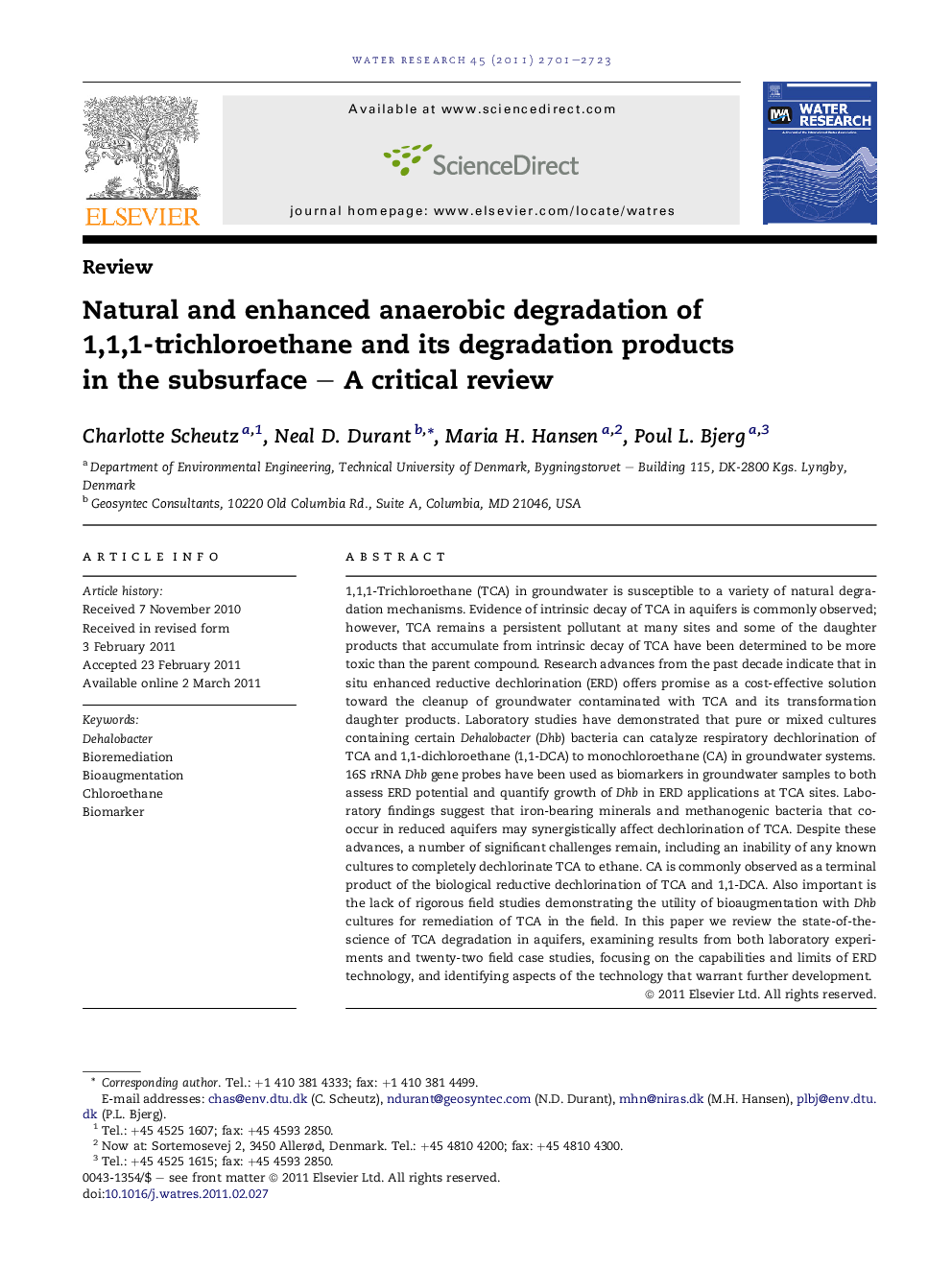| کد مقاله | کد نشریه | سال انتشار | مقاله انگلیسی | نسخه تمام متن |
|---|---|---|---|---|
| 4483426 | 1316888 | 2011 | 23 صفحه PDF | دانلود رایگان |

1,1,1-Trichloroethane (TCA) in groundwater is susceptible to a variety of natural degradation mechanisms. Evidence of intrinsic decay of TCA in aquifers is commonly observed; however, TCA remains a persistent pollutant at many sites and some of the daughter products that accumulate from intrinsic decay of TCA have been determined to be more toxic than the parent compound. Research advances from the past decade indicate that in situ enhanced reductive dechlorination (ERD) offers promise as a cost-effective solution toward the cleanup of groundwater contaminated with TCA and its transformation daughter products. Laboratory studies have demonstrated that pure or mixed cultures containing certain Dehalobacter (Dhb) bacteria can catalyze respiratory dechlorination of TCA and 1,1-dichloroethane (1,1-DCA) to monochloroethane (CA) in groundwater systems. 16S rRNA Dhb gene probes have been used as biomarkers in groundwater samples to both assess ERD potential and quantify growth of Dhb in ERD applications at TCA sites. Laboratory findings suggest that iron-bearing minerals and methanogenic bacteria that co-occur in reduced aquifers may synergistically affect dechlorination of TCA. Despite these advances, a number of significant challenges remain, including an inability of any known cultures to completely dechlorinate TCA to ethane. CA is commonly observed as a terminal product of the biological reductive dechlorination of TCA and 1,1-DCA. Also important is the lack of rigorous field studies demonstrating the utility of bioaugmentation with Dhb cultures for remediation of TCA in the field. In this paper we review the state-of-the-science of TCA degradation in aquifers, examining results from both laboratory experiments and twenty-two field case studies, focusing on the capabilities and limits of ERD technology, and identifying aspects of the technology that warrant further development.
► Laboratory studies indicate that transformation of TCA via ERD occurs at rates significantly faster than natural abiotic decay.
► Capabilities and limits of ERD for TCA have not been rigorously measured in the field.
► Fate of CA in aerobic and anaerobic aquifer systems is not well understood.
► TCA-respiring Dehalobacter appear to play a key role in performance of ERD for TCA.
► Field studies are needed to quantify performance of bioaugmentation with Dehalobacter.
Journal: Water Research - Volume 45, Issue 9, April 2011, Pages 2701–2723